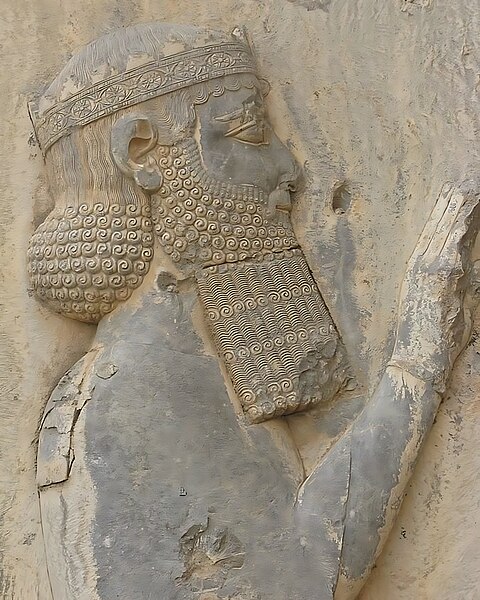Darius I, commonly known as Darius the Great, was a Persian ruler who served as the third King of Kings of the Achaemenid Empire, reigning from 522 BCE until his death in 486 BCE. He ruled the empire at its territorial peak, when it included much of Western Asia, parts of the Balkans and the Caucasus, most of the Black Sea's coastal regions, Central Asia, the Indus Valley in the far east, and portions of North Africa and Northeast Africa including Egypt (Mudrâya), eastern Libya, and coastal Sudan.
The relief stone of Darius the Great in the Behistun Inscription
Gold foundation tablets of Darius I for the Apadana Palace, in their original stone box. The Apadana coin hoard had been deposited underneath (c. 510 BCE).
One of the two gold deposition plates. Two more were in silver. They all had the same trilingual inscription (DPh inscription).
"Gaumata" being trampled upon by Darius the Great, Behistun inscription. The Old Persian inscription reads "This is Gaumâta, the Magian. He lied, saying "I am Smerdis, the son of Cyrus, I am king"."
Old Persian is one of two directly attested Old Iranian languages and is the ancestor of Middle Persian. Like other Old Iranian languages, it was known to its native speakers as ariya (Iranian). Old Persian is close to both Avestan and the language of the Rig Veda, the oldest form of the Sanskrit language. All three languages are highly inflected.
Close-up of the Behistun inscription
An Old Persian inscription in Persepolis






